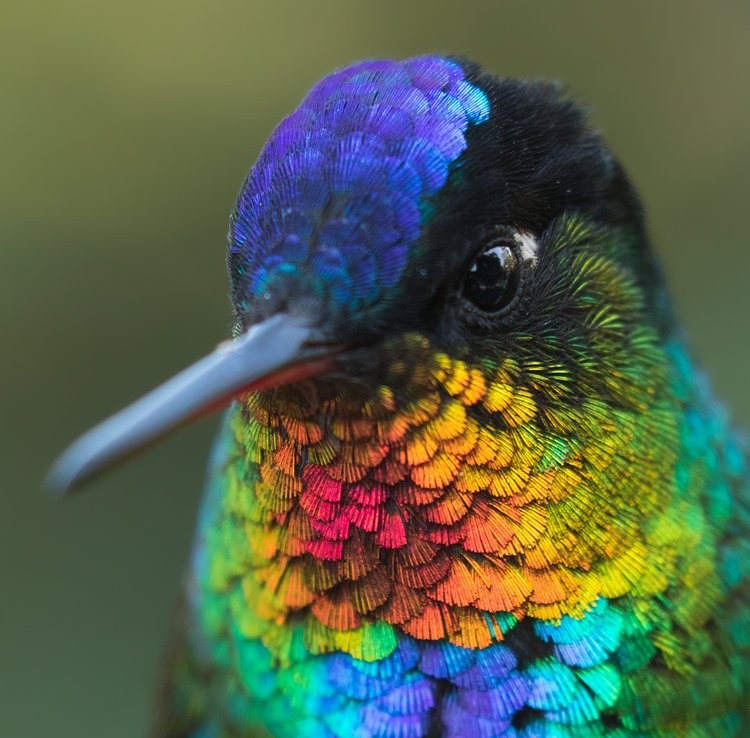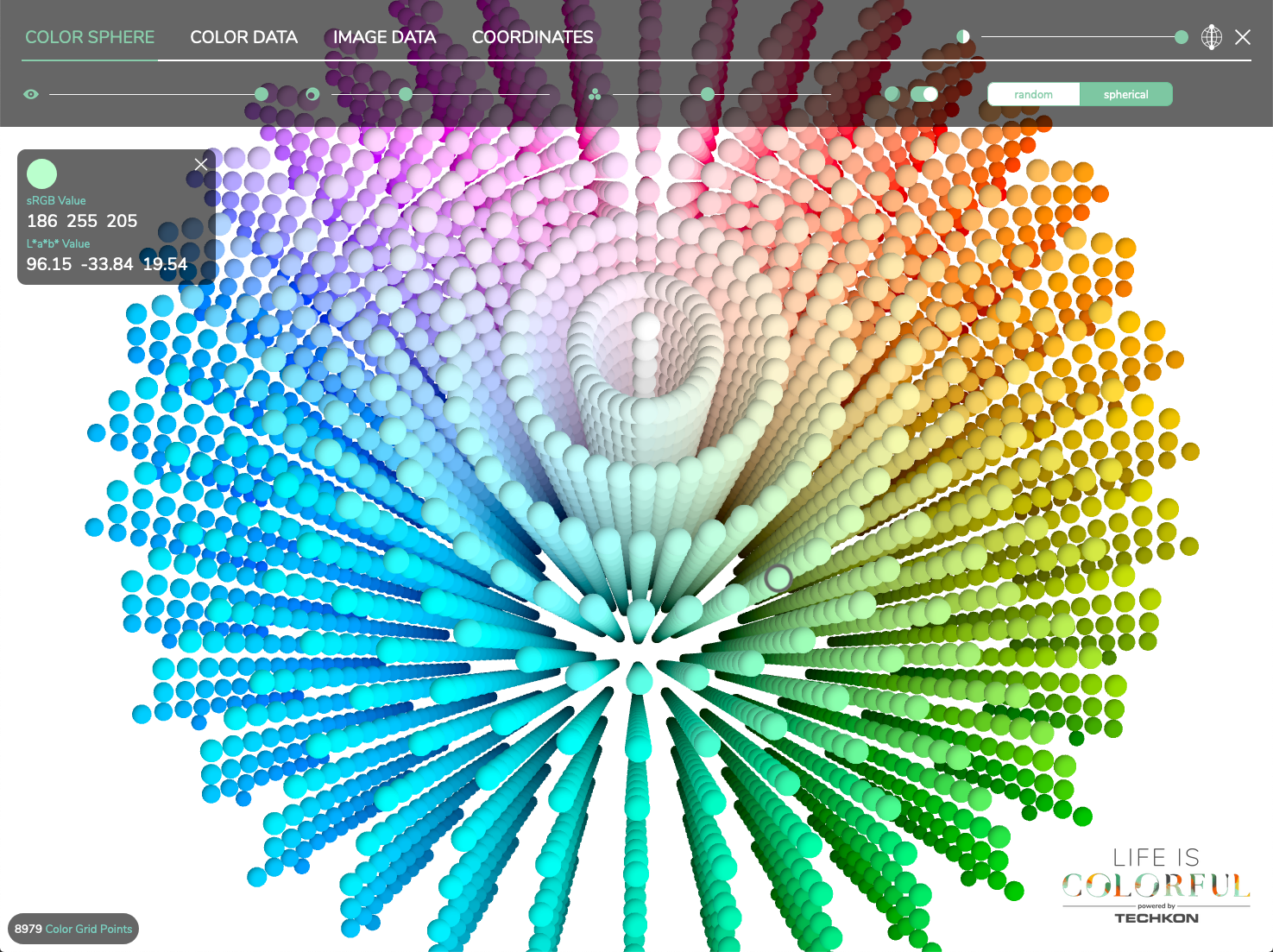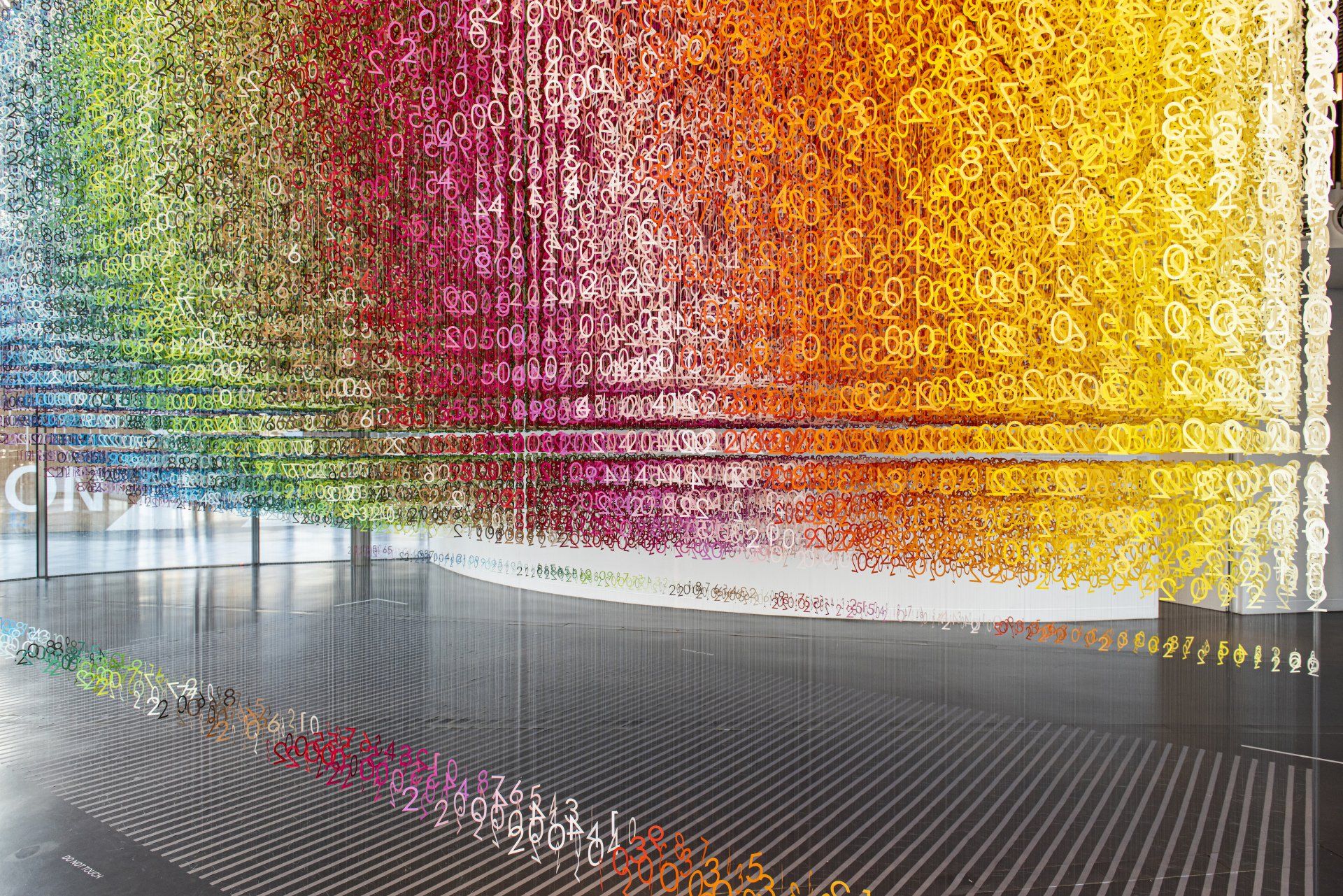Fascination and Challenge of Referencing Color Cosmetics
Why color cosmetics is beyond color and about the processing power of the human brain.
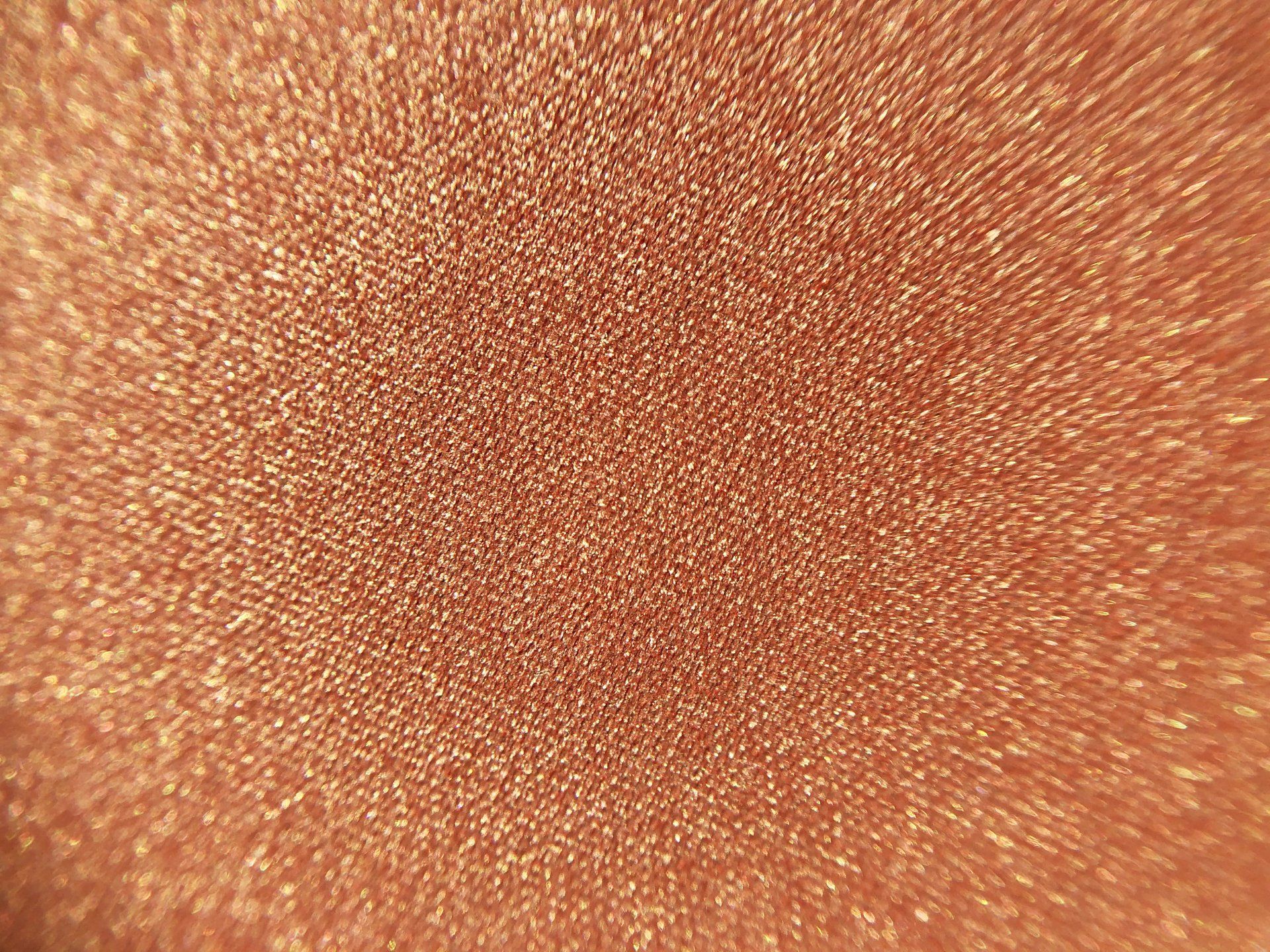
Bildtitel
A macro image from the pressed texture before using the product.
Button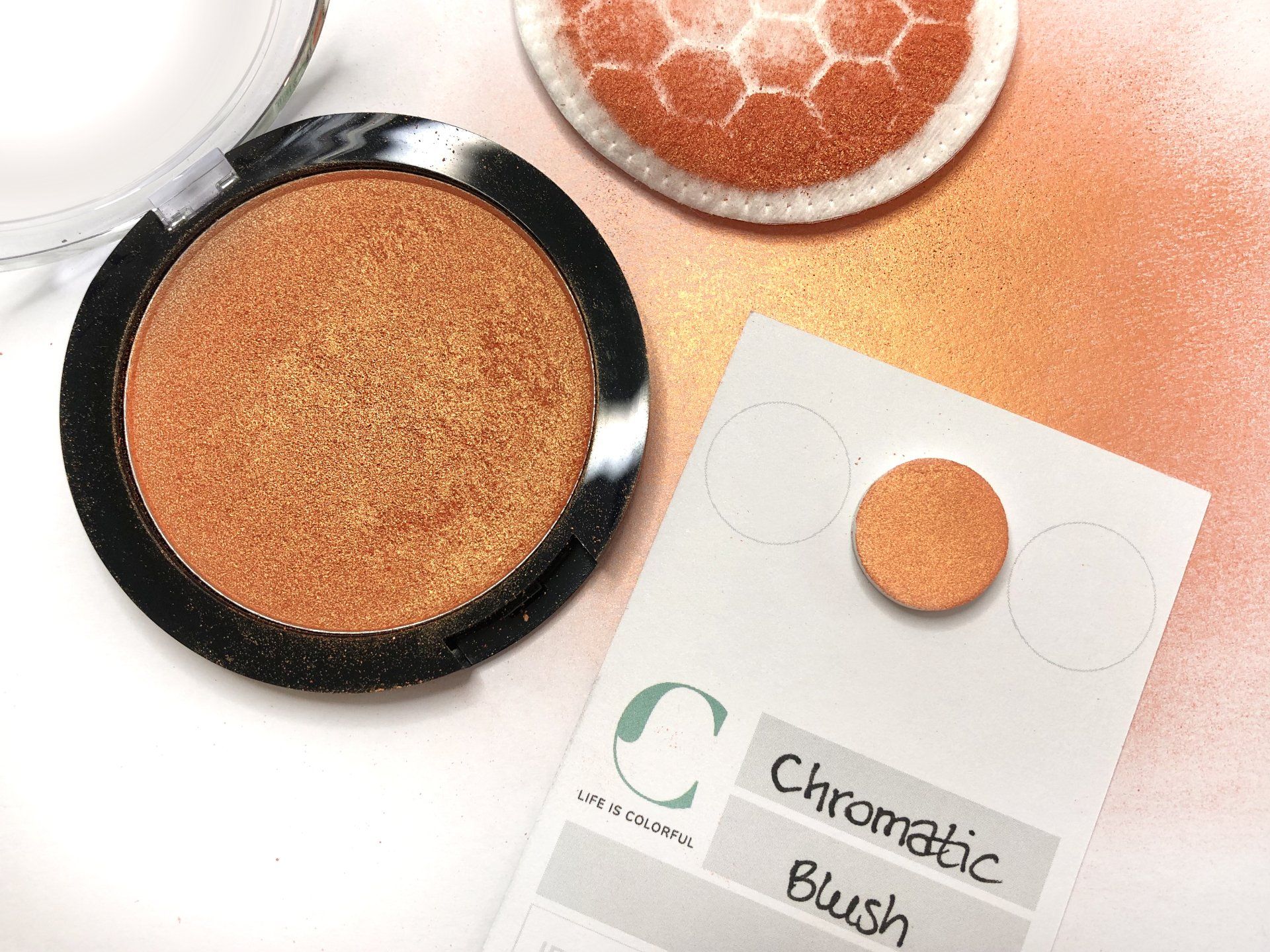
Bildtitel
The real product in its packaging and applied on different surfaces.
Button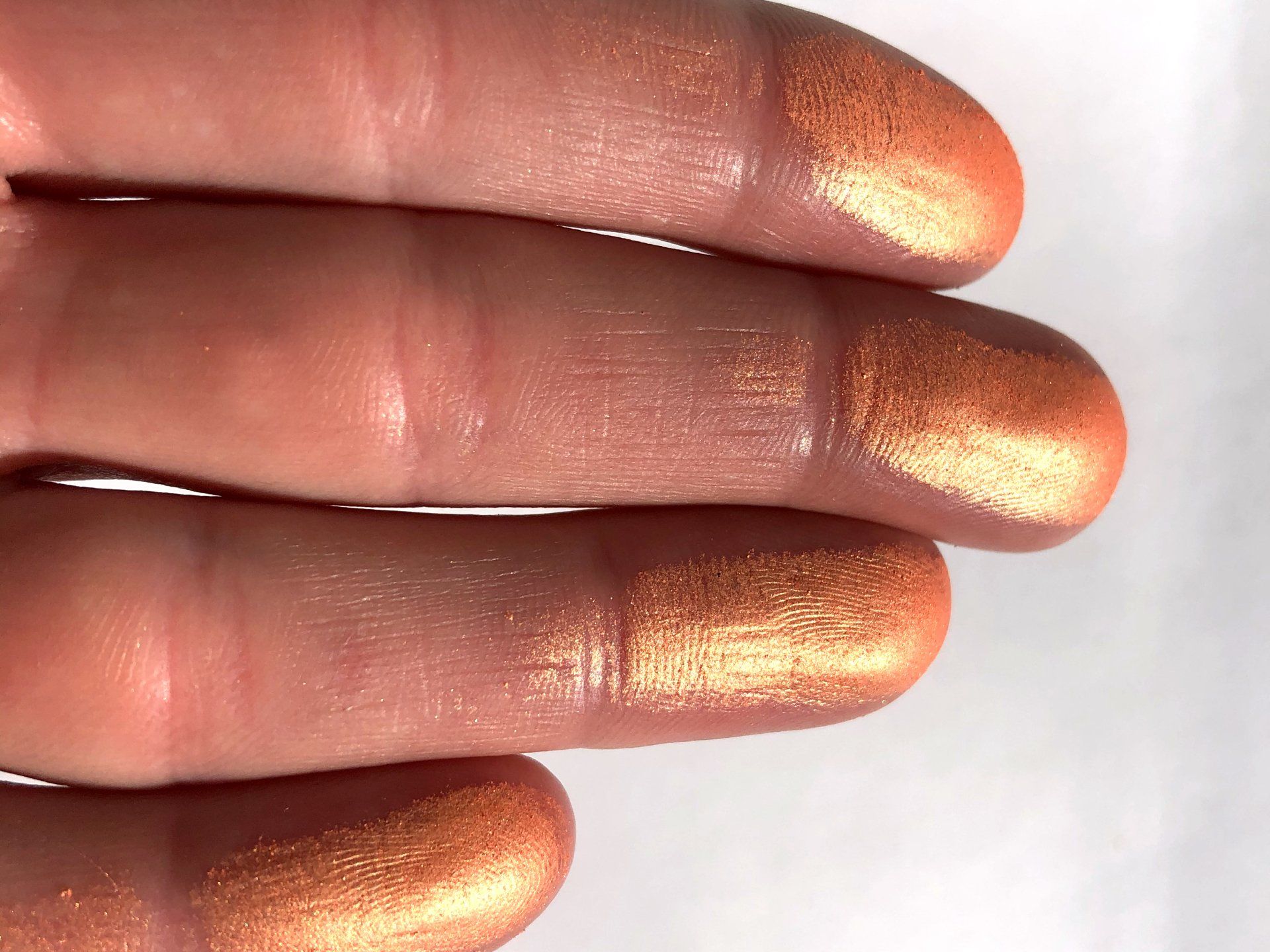
Bildtitel
In a high coverage the color gradient becomes perfectly visible on the finger tips.
Button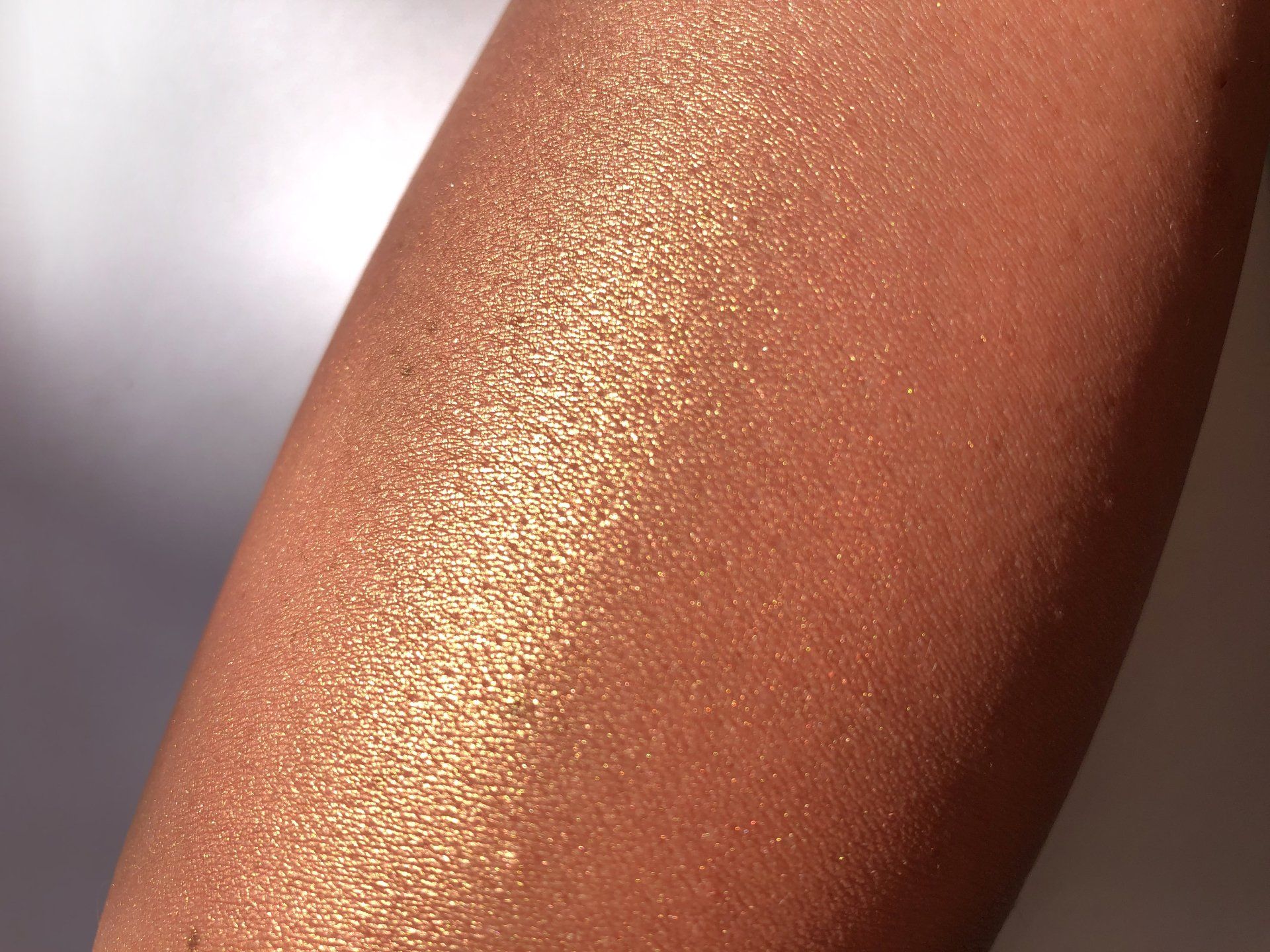
Bildtitel
The chromatic blush applied on my forearm with a lower coverage.
Button
Daniela Louise Heinemann is the Founder of LIFE IS COLORFUL. Color is her passion for more than a decade and the company name represents her attitude and approach to life. She is inspired by the beauty of nature, design and creativity & motivated by the almost endless opportunities our daily life offers. When she is not working on color topics somewhere in the world, she is likely creating a new recipe in her kitchen, out for a bike ride or dancing her energy off in her salsa shoes.
-
Thank you, #COSSMA magazine, for publishing our article in the latest issue 1/2 – 2101, where we talk about the beautiful language of color. Visit the news section on our homepage (👉🏼 link in bio) to download the full article and get access to the ePaper version of the latest issue. #lifeiscolorful #languageofcolors #color #colorfulButton
-
It is Sprinkle Day – And we love them of course, because they are so colorful! 😍 ⠀⠀ We can all see the different sprinkle shades in this image, right? If you load the image in our 3D tool ColorFinder the main colors become visible pretty clear: pink, red, yellow, cyan, orange, yellow, ... This is thanks to the image-based technology 👏🏼 ⠀⠀ Don't forget to sprinkle your desert today! 🌈 #sprinkleday #lifeiscolorful #colorvalue #colorfinder #colorscienceButton
-
DIGITIZE YOUR COLOR COSMETICS • What is the correct color of this lipstick bulk? 👉🏼 Swipe and see! ⠀⠀ LIFE IS COLORFUL exists to help beauty brands analyze, create, and communicate the perfect shades – So you keep your colors consistent and correct from idea to shelf. ⠀⠀ Reliable & accurate color values are the starting point for a customer’s journey and the overall color management cycle of the product – From idea, to online, AR applications and the real life product. It should be easy for the customer to find the perfect color and to make a confident purchase decision. #colorcosmetics #colorscience #colorvalue #colorcommunication #colormanagement #lipstick #lipstickswatch #shadevalidation #lifeiscolorfulButton
-
It is International French Fries Day! 🍟🎉 How do you prefer your fries: extra light, light, medium light, medium, or dark? And yes, there is a US standard for the color of frozen french fried potatoes. It dates back to 1966 to ensure food quality. ⠀⠀ „Color“ is such an important attribute for so many industries ☝🏼 #frenchfriesday #colorstandards #colorscience #funfacts #lifeiscolorfulButton
-
When white light hits an object, we see its color thanks to the light that is reflected by that object. The ☀️ is the most natural light source possible and reveals the beauty of all colorful objects with no limitations. ⠀⠀ The other way around: That is why everything is just gray at night ☝🏼 ⠀⠀ Fun fact: The Corona Virus is gray only, even though the media publishes it mostly in red shades for visual purposes 🦠 (and this Emoji is icky green) ... It is just too tiny to reflect any light. #color #colorperception #colorscience #light #sunlight #naturalwonders #grayatnight #lifeiscolorfulButton
-
We are celebrating our brand colors & our values 🎉 LIFE IS COLORFUL is clear! Our secondary Orange is more red than yellow, a bit loud (as we sometimes are 🤗) but still pleasant. It adds some warmth to our primary Mint for a perfect balance! ⠀⠀ Color doesn’t have to be complex: We translate the science into clear, accessible and easy writing. We want everyone to understand what we say. We love minimalism, but don’t like dull. We like detail, but never waste words. We are structured, clean and spacious. We have clarity on our purpose and what we do. ⠀⠀ #lifeiscolorful #values #beautytech #colorcosmetics #color #colormanagement #colorscienceButton
-
Ever thought about that? 💡 The majority of color cosmetics is more than color – It is about color, appearance & coverage. Our brain is processing a lot while assessing the appearance of a colorful product. Swipe & see this fascinating chromatic blush. Do you see the range of colors the product reveals, depending on the angle and the intensity of coverage? It is interesting to see what happens, when the product is applied on the skin and flat surfaces vs. this nice fluffy cotton pad, where the reflection/absorption reveals a different color impression 🌈 #lifeiscolorful #beautytech #colorcosmetics #color #colormanagement #colorscience #appearance #blush #iridescence #glittermakeup #colorfulmakeupButton
-
Go for a remote coffee with LIFE IS COLORFUL! ☕ Color is everywhere, even on our coffee – Let's soak up the full spectrum together and chat: ⠀⠀ We want to share our biggest passion and talk color with you. We want to help bring your perfect colors to life impeccably from AR and online to the real life product. We want to show how color starts with a shade and can end with even more, such as glitter, gloss, shimmer, pearl, metallic, chrome, holographic and mono- or polychromatic iridescent effects, and, and, and ... ⠀⠀ We would love to arrange a virtual call or consultation with you – Anywhere, anytime 🌎 As a fully remote company by nature we are also happy to share tips and tricks with everyone who is tackling home office these days 👩🏼💻🏡 👨🏾💻 ⠀⠀ Interested? Questions? Please message us! ⠀⠀ #lifeiscolorful #homesf #sanfrancisco #coffeeart #coffeelovers #remoteworkButton
-
Happy Holy Thursday! The day before Good Friday is called "Gründonnerstag" in Germany. A literal translation would be "green thursday". How nice, we 💚 green – But where does it come from? It is not 100% clear. One explanation is as follows: It is derived from a tradition of the 14th century, where people used to eat especially green vegetables and herbs. This is not only in accordance with the general fasting rules for Holy Week, but also in connection with the pre-Christian idea, that green and fresh food will help to absorb the power of spring with a healing effect for the whole year. ⠀⠀ We like the story and will therefore prepare a traditional regional dish using 7 different herbs 🤩 ⠀⠀ Whatever story you know, make sure to have a wonderful day & Happy Easter! 🐣🌷☀️ #lifeiscolorful #holythursday #happyeaster #gründonnerstag #grünesoßeButton
-
Ever wanted to create your own custom lipstick? 💄 Our founder Dani did exactly that when she visited the #LipLabxBITE in San Francisco. Here is her story: ⠀⠀ "I became aware of LipLab a long time ago. So when I knew I was visiting SanFran I scheduled my appointment in advance from Germany, because I HAD TO GO! ⠀⠀ After arrival I was introduced to my personal assistant who was there to create my own personalized lipstick. I got to know the four different finishes first – Matt, Luminous, Satin and Sheer – before we moved on to the best part: The shade creation. My goal was a nice orange lipstick (I brought some nailpolish references to match with 😏) and the assistant mixed just out of her experience, with no measurement device, which was so much fun to see and to try on during the process. ⠀⠀ Once my shade decision was made I could also choose a flavor and a name – So a satin-orange-coconut-summer version of LIFE IS COLORFUL was born. The final recipe was than produced in a larger amount, heated, mixed, filled and packed in a wonderful packaging to take home. ⠀⠀ What a nice memory and what a fantastic experience as a peek into how products are created. Highly recommended 👏🏼 Thank you, ladies!" NO ADVERTISEMENT #lifeiscolorful #beautytech #personalizedbeauty #sanfrancisco #travelButton
-
Our „Did you know?“-series is starting 👏🏼 Get to know our all time favourite - The one and only L*a*b* color space. Check out our first video & dive into the three dimensional world of colors! #lifeiscolorful #color #colormanagement #colorscienceButton
-
We are celebrating our brand colors & our values 🎉 LIFE IS COLORFUL is fresh! Our primary Mint is elegant and balanced, neither loud or calm. Mint is fresh, fresh is young, young is innovative. We swap flat tradition, for refreshing flavour. We choose the unexpected, not the well-worn. We innovate, experiment, fail fast and grow. We express ourselves in zesty, invigorating ways. We add an energizing twist to our words. And communicate through a fresh lens. For our Founder Dani, smell and taste of Mint is soothing and relaxing. What do you "Mint" associate with? #lifeiscolorful #values #beautytech #colorcosmetics #color #colormanagement #colorscienceButton
-
Hello everyone! 👋🏼 We are LIFE IS COLORFUL and we exist to help beauty brands analyze, create and communicate the perfect shades – To keep colors consistent and correct from idea to shelf. ⠀⠀ 👉🏼 Visit our colorful website to learn more (link in bio). ⠀⠀ #lifeiscolorful #beautytech #colorcosmetics #color #colormanagement #colorscienceButton
-
Thank you, #COSSMA magazine, for publishing our article in the latest issue 1/2 – 2101, where we talk about the beautiful language of color. Visit the news section on our homepage (👉🏼 link in bio) to download the full article and get access to the ePaper version of the latest issue. #lifeiscolorful #languageofcolors #color #colorfulButton
-
It is Sprinkle Day – And we love them of course, because they are so colorful! 😍 ⠀⠀ We can all see the different sprinkle shades in this image, right? If you load the image in our 3D tool ColorFinder the main colors become visible pretty clear: pink, red, yellow, cyan, orange, yellow, ... This is thanks to the image-based technology 👏🏼 ⠀⠀ Don't forget to sprinkle your desert today! 🌈 #sprinkleday #lifeiscolorful #colorvalue #colorfinder #colorscienceButton
-
DIGITIZE YOUR COLOR COSMETICS • What is the correct color of this lipstick bulk? 👉🏼 Swipe and see! ⠀⠀ LIFE IS COLORFUL exists to help beauty brands analyze, create, and communicate the perfect shades – So you keep your colors consistent and correct from idea to shelf. ⠀⠀ Reliable & accurate color values are the starting point for a customer’s journey and the overall color management cycle of the product – From idea, to online, AR applications and the real life product. It should be easy for the customer to find the perfect color and to make a confident purchase decision. #colorcosmetics #colorscience #colorvalue #colorcommunication #colormanagement #lipstick #lipstickswatch #shadevalidation #lifeiscolorfulButton
-
It is International French Fries Day! 🍟🎉 How do you prefer your fries: extra light, light, medium light, medium, or dark? And yes, there is a US standard for the color of frozen french fried potatoes. It dates back to 1966 to ensure food quality. ⠀⠀ „Color“ is such an important attribute for so many industries ☝🏼 #frenchfriesday #colorstandards #colorscience #funfacts #lifeiscolorfulButton
-
When white light hits an object, we see its color thanks to the light that is reflected by that object. The ☀️ is the most natural light source possible and reveals the beauty of all colorful objects with no limitations. ⠀⠀ The other way around: That is why everything is just gray at night ☝🏼 ⠀⠀ Fun fact: The Corona Virus is gray only, even though the media publishes it mostly in red shades for visual purposes 🦠 (and this Emoji is icky green) ... It is just too tiny to reflect any light. #color #colorperception #colorscience #light #sunlight #naturalwonders #grayatnight #lifeiscolorfulButton
-
We are celebrating our brand colors & our values 🎉 LIFE IS COLORFUL is clear! Our secondary Orange is more red than yellow, a bit loud (as we sometimes are 🤗) but still pleasant. It adds some warmth to our primary Mint for a perfect balance! ⠀⠀ Color doesn’t have to be complex: We translate the science into clear, accessible and easy writing. We want everyone to understand what we say. We love minimalism, but don’t like dull. We like detail, but never waste words. We are structured, clean and spacious. We have clarity on our purpose and what we do. ⠀⠀ #lifeiscolorful #values #beautytech #colorcosmetics #color #colormanagement #colorscienceButton
-
Ever thought about that? 💡 The majority of color cosmetics is more than color – It is about color, appearance & coverage. Our brain is processing a lot while assessing the appearance of a colorful product. Swipe & see this fascinating chromatic blush. Do you see the range of colors the product reveals, depending on the angle and the intensity of coverage? It is interesting to see what happens, when the product is applied on the skin and flat surfaces vs. this nice fluffy cotton pad, where the reflection/absorption reveals a different color impression 🌈 #lifeiscolorful #beautytech #colorcosmetics #color #colormanagement #colorscience #appearance #blush #iridescence #glittermakeup #colorfulmakeupButton
-
Go for a remote coffee with LIFE IS COLORFUL! ☕ Color is everywhere, even on our coffee – Let's soak up the full spectrum together and chat: ⠀⠀ We want to share our biggest passion and talk color with you. We want to help bring your perfect colors to life impeccably from AR and online to the real life product. We want to show how color starts with a shade and can end with even more, such as glitter, gloss, shimmer, pearl, metallic, chrome, holographic and mono- or polychromatic iridescent effects, and, and, and ... ⠀⠀ We would love to arrange a virtual call or consultation with you – Anywhere, anytime 🌎 As a fully remote company by nature we are also happy to share tips and tricks with everyone who is tackling home office these days 👩🏼💻🏡 👨🏾💻 ⠀⠀ Interested? Questions? Please message us! ⠀⠀ #lifeiscolorful #homesf #sanfrancisco #coffeeart #coffeelovers #remoteworkButton
-
Happy Holy Thursday! The day before Good Friday is called "Gründonnerstag" in Germany. A literal translation would be "green thursday". How nice, we 💚 green – But where does it come from? It is not 100% clear. One explanation is as follows: It is derived from a tradition of the 14th century, where people used to eat especially green vegetables and herbs. This is not only in accordance with the general fasting rules for Holy Week, but also in connection with the pre-Christian idea, that green and fresh food will help to absorb the power of spring with a healing effect for the whole year. ⠀⠀ We like the story and will therefore prepare a traditional regional dish using 7 different herbs 🤩 ⠀⠀ Whatever story you know, make sure to have a wonderful day & Happy Easter! 🐣🌷☀️ #lifeiscolorful #holythursday #happyeaster #gründonnerstag #grünesoßeButton
-
Ever wanted to create your own custom lipstick? 💄 Our founder Dani did exactly that when she visited the #LipLabxBITE in San Francisco. Here is her story: ⠀⠀ "I became aware of LipLab a long time ago. So when I knew I was visiting SanFran I scheduled my appointment in advance from Germany, because I HAD TO GO! ⠀⠀ After arrival I was introduced to my personal assistant who was there to create my own personalized lipstick. I got to know the four different finishes first – Matt, Luminous, Satin and Sheer – before we moved on to the best part: The shade creation. My goal was a nice orange lipstick (I brought some nailpolish references to match with 😏) and the assistant mixed just out of her experience, with no measurement device, which was so much fun to see and to try on during the process. ⠀⠀ Once my shade decision was made I could also choose a flavor and a name – So a satin-orange-coconut-summer version of LIFE IS COLORFUL was born. The final recipe was than produced in a larger amount, heated, mixed, filled and packed in a wonderful packaging to take home. ⠀⠀ What a nice memory and what a fantastic experience as a peek into how products are created. Highly recommended 👏🏼 Thank you, ladies!" NO ADVERTISEMENT #lifeiscolorful #beautytech #personalizedbeauty #sanfrancisco #travelButton
-
Our „Did you know?“-series is starting 👏🏼 Get to know our all time favourite - The one and only L*a*b* color space. Check out our first video & dive into the three dimensional world of colors! #lifeiscolorful #color #colormanagement #colorscienceButton
-
We are celebrating our brand colors & our values 🎉 LIFE IS COLORFUL is fresh! Our primary Mint is elegant and balanced, neither loud or calm. Mint is fresh, fresh is young, young is innovative. We swap flat tradition, for refreshing flavour. We choose the unexpected, not the well-worn. We innovate, experiment, fail fast and grow. We express ourselves in zesty, invigorating ways. We add an energizing twist to our words. And communicate through a fresh lens. For our Founder Dani, smell and taste of Mint is soothing and relaxing. What do you "Mint" associate with? #lifeiscolorful #values #beautytech #colorcosmetics #color #colormanagement #colorscienceButton
-
Hello everyone! 👋🏼 We are LIFE IS COLORFUL and we exist to help beauty brands analyze, create and communicate the perfect shades – To keep colors consistent and correct from idea to shelf. ⠀⠀ 👉🏼 Visit our colorful website to learn more (link in bio). ⠀⠀ #lifeiscolorful #beautytech #colorcosmetics #color #colormanagement #colorscienceButton
Colorful news right into your inbox
Kontaktieren Sie uns
Thank you, you're in! The next newsletter is coming soon.
Oops, there was an error sending your message.
Please try again later.

